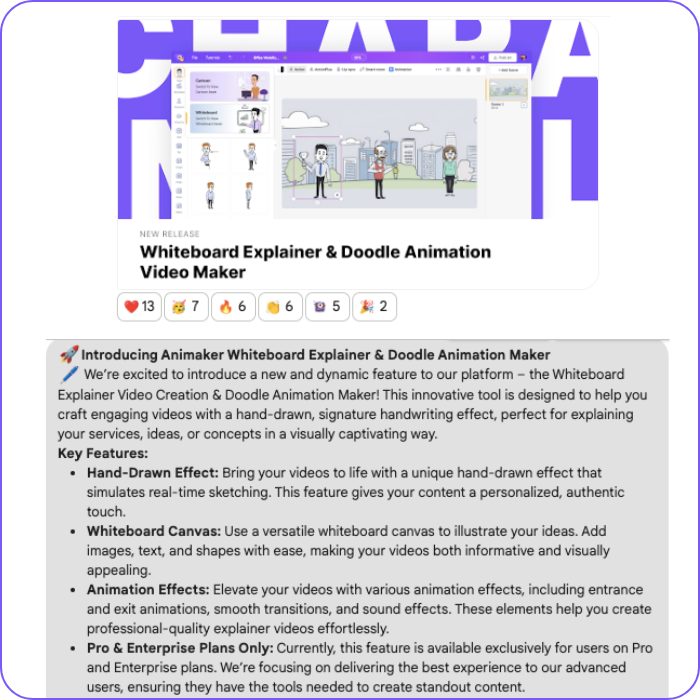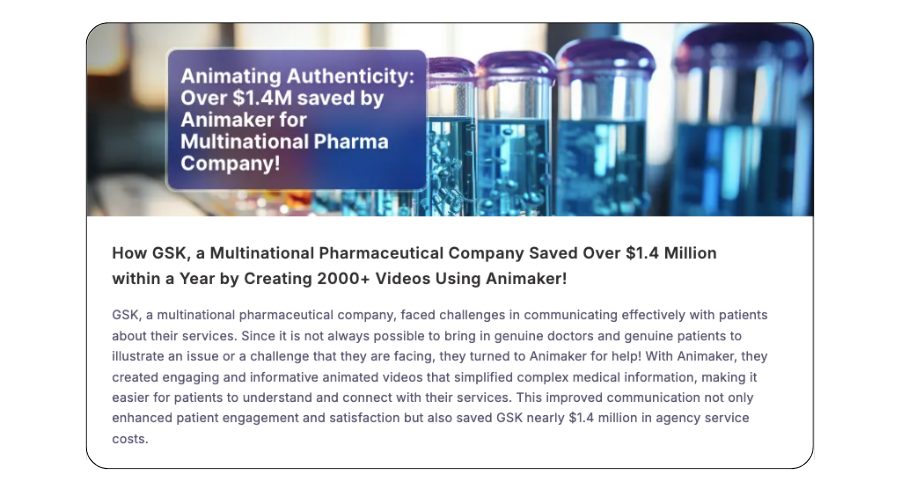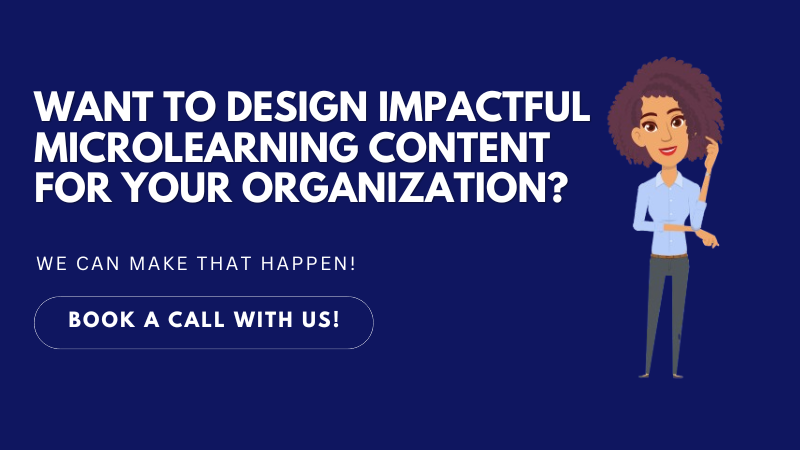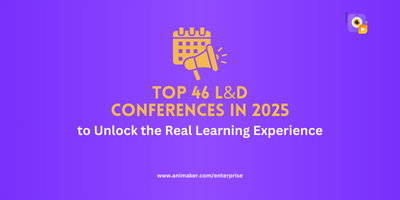15 Game-Changing Microlearning Examples for Effective Training!
In today's corporate world, the demand for learning solutions that are both effective and efficient has never been greater.
As organizations strive to keep their workforce skilled and adaptable, traditional training methods often fall short in addressing the needs of modern learners, particularly in a generation where attention spans are shorter than ever.
Did you know that the attention span of internet users is much less than that of a goldfish?

This is concerning, right?
The constant overload of information and distractions has made it increasingly difficult for individuals to focus on lengthy training sessions. This is where microlearning comes into play.
But what is microlearning?
Microlearning is an educational strategy that delivers content in small, focused segments, typically lasting just a few minutes.
By breaking down complex information into bite-sized, easily digestible chunks, microlearning offers a solution that aligns with how people learn and retain information in the digital age.
To ensure its effectiveness, it's important to follow microlearning best practices, which help maximize engagement and retention.
Now, let’s dive into some of the best microlearning examples that show how to deliver impactful training through short, focused formats.
- Short Video Tutorials
- Scenario-Based Learning
- Infographics
- True / False
- Spot the mistake
- Ordering steps
- Flashcards
- Interactive Quizzes
- Podcasts or Audio clips
- Daily Tips or Facts
- Social Media Posts
- Weekly Highlights
- Gamified Quizzes
- Spaced Repetition
- Brief Case Study Highlights
Let’s begin!
Microlearning examples
There are different formats and techniques when it comes to microlearning apart from just micro videos. Here are some microlearning examples:
1. Short Video Tutorials
This is a classic format of microlearning. A quick tutorial video that guides employees on a specific task or process, which allows them to quickly learn how to perform it without sitting through a long training session.
This 90-second tutorial efficiently shows viewers how to save files in Dropbox, cutting straight to the point without wasting time on unnecessary explanations.
2. Scenario-Based Learning
This type of microlearning involves a brief scenario based on real work examples, presenting a number of choices where learners must make a decision.
This approach not only helps learners apply knowledge in real-world situations but also understand the potential consequences of their decisions within a work environment.
Here is an example of scenario-based learning.
Here, the viewer must make decisions for Sarah, the new employee who finds herself in tricky situations.
This type of scenario based learning makes learning engaging and encourages active participation from the learners.
If you are wondering how this video was made, it is made with Animaker and then integrated into Articulate Storyline.
Articulate Storyline is very popular among L&D professionals, but what is Animaker?
Animaker AI is an AI-powered video creation platform that can create professional quality 2D animated and live-action videos in minutes!
With many features under its belt, like easy drag-and-drop interface, pre-made templates, custom character creation, adding AI voiceovers and subtitles, and much more, Animaker makes it a breeze to create dynamic, professional-quality eLearning videos.
If you want to learn more about scenario based learning videos, then check out the link provided.
3. Infographics
An infographic that visually breaks down the steps of a process, such as fixing a software issue or the dos and don’ts of a sales pitch, can be a powerful microlearning tool.

One of the advantages of infographics is that they can be printed and pinned to an employee's desk, providing a quick and accessible reference that can be easily revisited whenever needed.
4. True / False
A True/False questionnaire can be a quick reinforcement tool to test understanding and retention of key concepts.

This format allows learners to assess their knowledge efficiently and identify any areas needing further review.
5. Spot the mistake
This type of microlearning involves presenting learners with content containing deliberate errors that they must identify and correct.
Such an approach not only enhances critical thinking skills but also strengthens attention to detail and accuracy.

Here, the mistake is that the sales team waits for the customer to respond before preparing a proposal. Ideally, proposals should be prepared and be ready to send after the follow-up email to streamline the sales process.
6. Ordering Steps
Presenting a series of steps in a random order and asking employees to arrange them correctly can effectively assess their understanding of a process.

This activity not only tests their knowledge of the correct sequence but also reinforces their grasp of the procedure's logical flow.
7. Flashcards
Digital flashcards for learning industry-specific terminologies or procedures, with one term or concept per card, provide a quick and effective way to reinforce key information. This type of microlearning is ideal for spaced repetition learning, helping learners retain information over time.

8. Interactive Quizzes
Interactive quizzes are engaging learning formats that test learners' knowledge through multiple-choice, true/false, or drag-and-drop questions.
These quizzes encourage active participation, making learning more engaging and effective by providing immediate insights into a learner's understanding.
This quick quiz with five questions below is a part of a scenario based course. These types of quizzes can reinforce key concepts learned during a training session. This will help learners assess their understanding, identify areas for improvement, and retain information more effectively.
The above quiz offers an interactive experience with instant feedback. Learners receive guidance if their answer is wrong and positive reinforcement if it is correct, helping to reinforce understanding.
9. Podcasts or Audio Clips
A 3 to 5-minute audio clip discussing the key takeaways from a recent industry report or providing quick insights on relevant topics can be an effective microlearning tool.
 This is perfect for on-the-go learning during commutes or breaks, allowing employees to stay informed and up-to-date without disrupting their daily schedules.
This is perfect for on-the-go learning during commutes or breaks, allowing employees to stay informed and up-to-date without disrupting their daily schedules.
10. Daily Tips or Facts
A daily email featuring tips and facts related to the industry, product, or specific roles can boost productivity and help employees master new skills.

This microlearning approach keeps learning continuous and manageable, fitting into the daily work routine.
11. Social Media Posts
A series of LinkedIn posts with daily tips and industry insights can be powerful microlearning.

By leveraging social media, these bite-sized insights are delivered directly to learners' feeds, making learning more accessible and engaging.
12. Weekly Highlights
A summary or recap of the week’s key learning points can be sent out as a brief email, providing a concise review of important concepts.

This microlearning example helps reinforce learning by keeping key information fresh in learners' minds and ensuring they are up-to-date with recent developments in the products, organization, or insights.
13. Gamified Quizzes
Brief quizzes with game-like elements, such as points, levels, and leaderboards, can make learning more engaging and motivating.
 By incorporating these interactive features, learners are encouraged to actively participate and track their progress, making the learning experience both fun and rewarding.
By incorporating these interactive features, learners are encouraged to actively participate and track their progress, making the learning experience both fun and rewarding.
14. Spaced Repetition
Spaced Repetition is a powerful microlearning technique designed to improve long-term retention.

Instead of cramming information in a short period, content is reviewed at increasing intervals over time. This method uses the psychological spacing effect, ensuring that learners reinforce key concepts just before they are likely to forget them.
15. Brief Case Study Highlights
In this type, condensed versions of case studies that focus on key insights or outcomes are delivered in a quick digestible format.

This approach provides a fast, focused review of critical lessons, making it easier for learners to understand essential takeaways. This way, learners can more readily apply the lessons to similar situations.
These microlearning examples demonstrate how microlearning can be integrated into various formats to create engaging and effective training experiences.
But what does the future look like in microlearning?
Future Trends in Microlearning
The future of microlearning looks promising, with several trends shaping its evolution in the Learning and Development (L&D) community:
- Increased use of AI to personalize learning experiences.
- Greater emphasis on mobile learning to align with modern work habits.
- Integration of gamification for fun and interactive learning.
- Focus on just-in-time learning by providing employees with access to quick, targeted training that fits busy schedules.
These are a few future trends that we can look forward to in the L&D landscape.
Recently, we had the opportunity to interview Shannon Tipton, who is a microlearning expert and an advocate for change in workplace learning with nearly 30 years of experience in the L&D industry.
If you’re curious about her insights on microlearning, check out the video below:
Challenges and Considerations
While the future of microlearning is bright, there are also challenges to consider. These include:
- The difficulty of constantly creating high-quality, relevant content that remains engaging over a period of time,
- The need for continuous updates to keep material current,
- Ensuring accessibility for all learners, including those with disabilities, and
- Recognizing that microlearning may not always be suitable for complex subjects requiring in-depth study and deep understanding.
Overall, microlearning is positioned to grow as a vital tool in corporate training.
***
With statistics backing up the claims, microlearning has proven to be an essential strategy in the evolving landscape of learning and development (L&D).
As the demand for continuous learning grows, microlearning will continue to play an important role in helping organizations stay competitive. By embracing this approach, companies can foster a culture of continuous development, preparing their workforce for the future of work.
You can adopt all these microlearning examples to your training strategies, from scenario-based videos to social media posts, to create a diverse and engaging learning experience.









